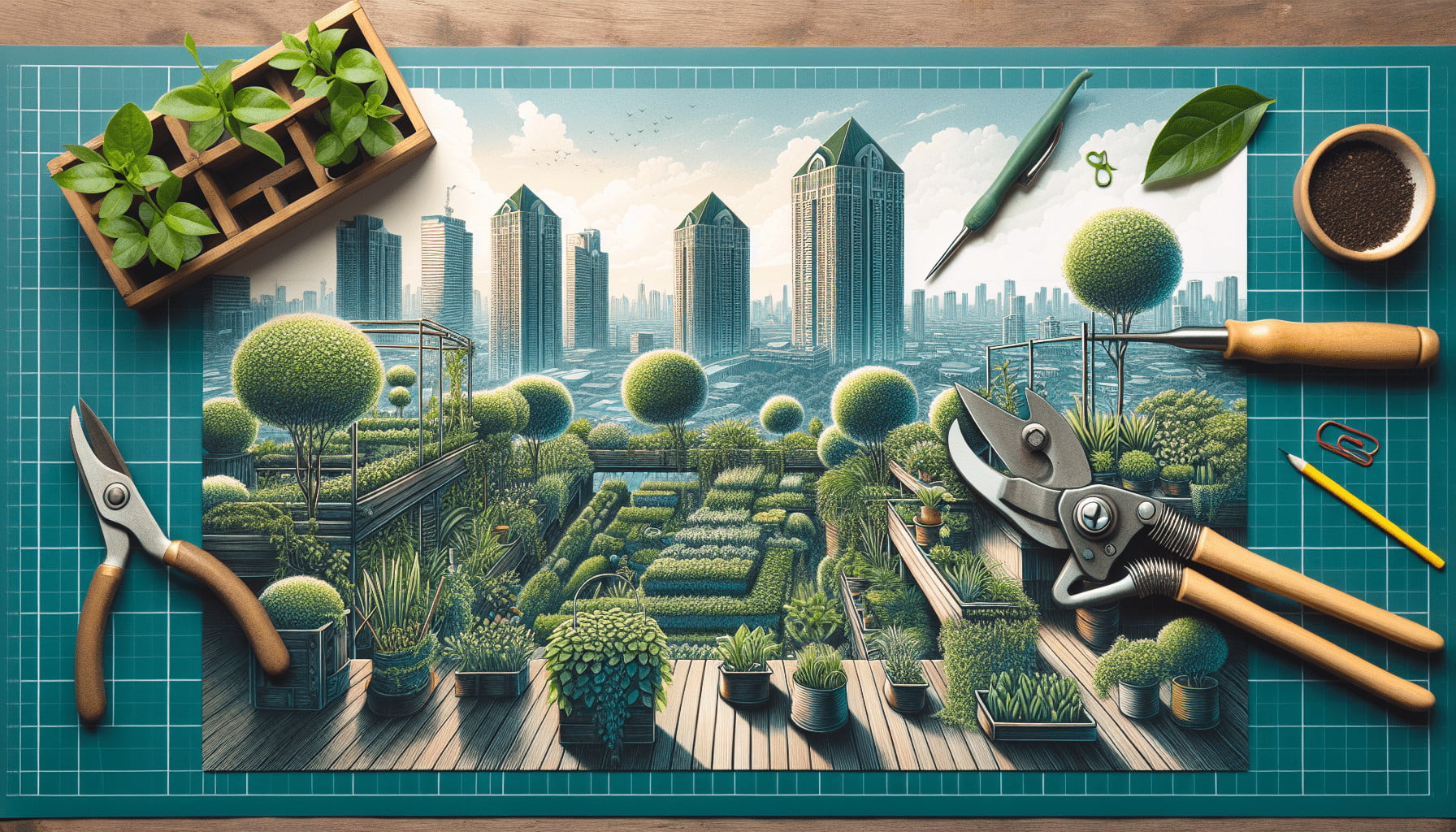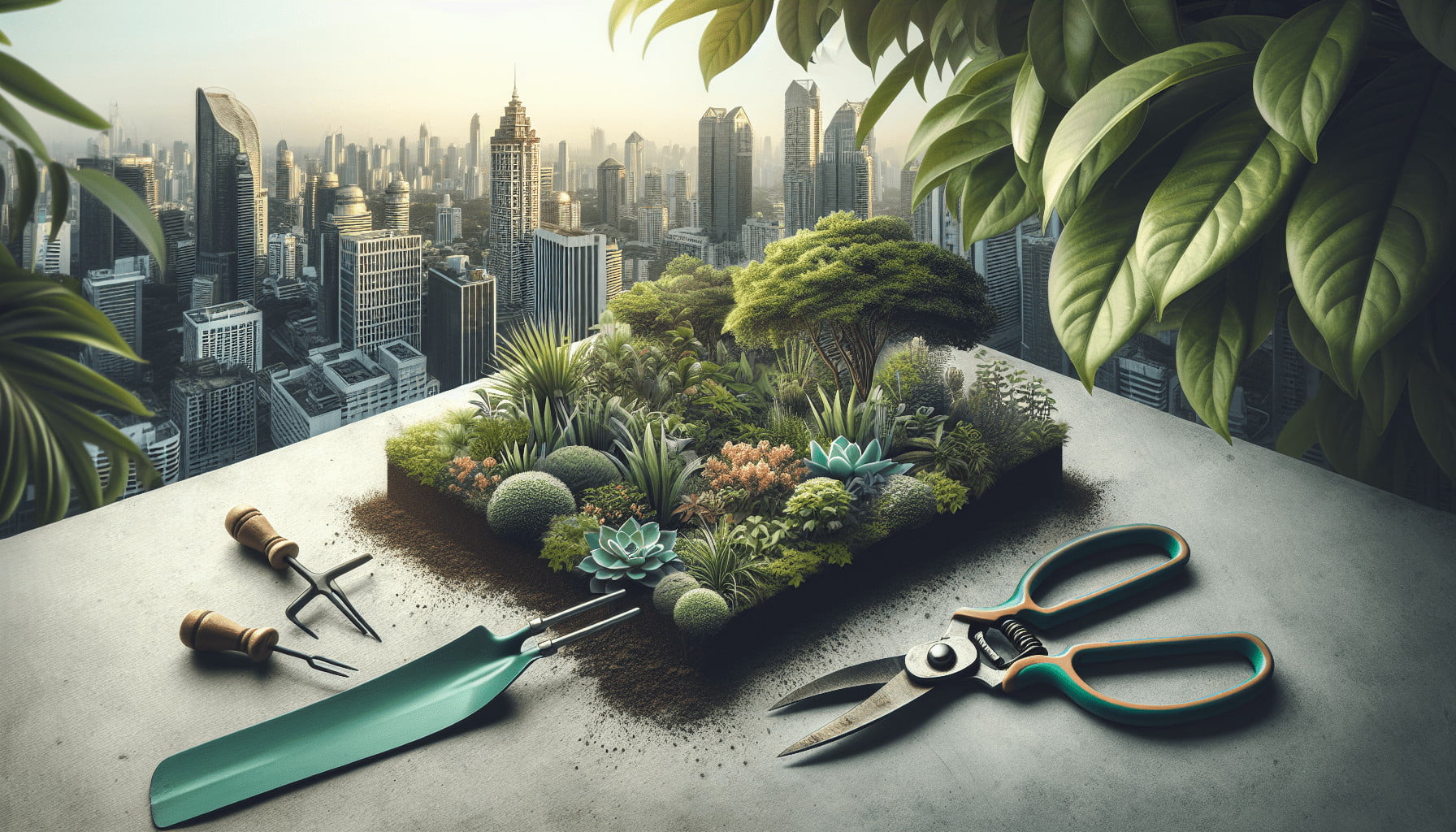Have you ever wondered why your gardening tools seem to wear out so quickly when used in your rooftop garden? Rooftop gardens are a wonderful way to bring greenery into urban spaces, but they can also be tough on your tools. Environmental factors such as sunlight, wind, and rain, as well as the unique conditions of a rooftop, can accelerate the wear and tear on your gardening equipment. Fear not! With the right knowledge and strategies, you can extend the lifespan of your tools significantly.

Understanding the Challenges of Rooftop Gardening
Rooftop gardening comes with its own set of unique challenges. From extreme weather conditions to limited storage space, several factors can contribute to the rapid deterioration of your tools. Knowing these challenges can help you take proactive measures to protect your equipment.
Exposure to Harsh Weather Conditions
One of the most significant challenges is exposure to harsh weather elements. On a rooftop, tools are more likely to be exposed to direct sunlight, heavy rainfall, and strong winds. Each of these conditions can contribute to the degradation of your equipment.
Limited Storage Space
Rooftop gardens often have limited storage options, meaning you might need to get creative with how you store your tools. Improper storage can lead to rust, corrosion, and physical damage, further reducing the lifespan of your gardening gear.
High Temperature Fluctuations
Rooftops can experience extreme temperature fluctuations – from the sweltering heat of summer afternoons to chilly mornings. These changes can weaken the materials of your tools, making them more susceptible to wear and tear.
Best Practices for Tool Maintenance
Maintaining your tools properly is the first step to ensuring they last as long as possible. Good maintenance habits can prevent minor issues from becoming major problems.
Regular Cleaning
Regular cleaning is essential to remove dirt, sap, and other residues that can cause corrosion or mechanical failure. After each use, make sure to clean your tools with water and a brush, then dry them thoroughly before storing.
Here’s a simple cleaning routine:
| Step | Action |
|---|---|
| 1 | Wash tools with water and a cleaning brush. |
| 2 | Dry tools thoroughly with a cloth. |
| 3 | Apply a light coating of oil to metal parts. |
Sharpening and Oiling
Keeping your tools sharp is crucial for their longevity and effectiveness. Dull tools require more effort to use and can cause damage to both the tools and the plants. Regularly sharpen blades and scissors, and don’t forget to oil moving parts to keep them functioning smoothly.
| Tool Type | Maintenance Tip |
|---|---|
| Pruning Shears | Sharpen blades every few weeks. |
| Shovels | Sharpen edges seasonally. |
| Moving Parts | Apply oil regularly. |
Rust Prevention Techniques
Rust is the nemesis of any gardener. To prevent rust, always store tools in a dry place, and consider using silica gel packs in your storage area to absorb excess moisture. Coating metal parts with a thin layer of oil can also add an extra layer of protection against rust.
Effective Storage Solutions
Proper storage is essential to protect your gardening tools from the elements. Here are some storage solutions that can help safeguard your equipment.
Weatherproof Storage Boxes
Investing in a weatherproof storage box can be a game-changer. These sturdy containers are designed to keep moisture out and offer a safe space to store your tools. Ensure the box has good ventilation to prevent any mold or mildew from forming.
Tool Racks and Organizers
Using tool racks and organizers can help keep your tools off the ground and neatly arranged. This makes it easier to find the tool you need and helps reduce accidental damage. Wall-mounted racks are particularly effective for saving space and keeping your tools in good condition.
Portable Tool Bags
For those who prefer mobility, a portable tool bag can be very convenient. These bags often come with waterproof features and multiple pockets, providing ample storage for various tools while keeping them protected from the elements.
Choosing the Right Materials
The materials of the tools you choose can have a significant impact on their longevity in a rooftop garden setting. Some materials are naturally more resistant to wear and tear than others.
Stainless Steel
Stainless steel tools are highly resistant to rust and corrosion, making them ideal for outdoor use. They are also sturdy enough to withstand the rigors of heavy garden work. While they might be more expensive, the investment can pay off in the long run.
High-Quality Plastics
Tools made from high-quality plastics are resistant to cracking and breaking under pressure. These tools are often lighter than metal tools, making them easier to handle. However, ensure they are UV-resistant to prevent degradation from sunlight exposure.
Wooden Handles
Wooden handles offer a comfortable grip and are durable if treated properly. Look for tools with hardwood handles like ash or hickory, which are less likely to break. Regularly treating wooden handles with linseed oil can prolong their lifespan.
Aluminum
Aluminum gardening tools are lightweight yet durable. They are resistant to rust but can be prone to bending under heavy stress. Aluminum tools with reinforced designs can offer a good balance between weight and strength.

Advanced Protection Techniques
Taking extra measures can provide an additional layer of protection for your tools, helping them to last even longer.
Use of Protective Coatings
Applying protective coatings such as varnish on wooden handles or anti-rust sprays on metal parts can extend the life of your tools. These coatings act as a barrier against the elements, reducing the risk of wear and tear.
Implementing Tool Coverings
Using tool coverings such as blade sheaths or handle guards can provide extra protection when the tools are not in use. These coverings shield the vulnerable parts of the tools from direct exposure to harsh conditions.
Custom-Built Shelters
If you have the space and resources, building a small, dedicated shelter for your tools can offer unparalleled protection. This could be a simple shed or even a custom-built compartment designed to minimize exposure to the elements.
Routine Inspection and Early Problem Detection
Routine inspection of your gardening tools can help in the early detection of problems, allowing you to address them before they become serious issues.
Scheduled Inspections
Set a regular schedule for inspecting your tools. Look for signs of wear such as cracks, rust, or loose parts. Early detection can save you from costly repairs or replacements.
| Inspection Frequency | Key Actions |
|---|---|
| Weekly | Check for rust, clean, and dry. |
| Monthly | Sharpen blades and inspect handles. |
| Seasonally | Deep-clean and apply protective coatings. |
Immediate Repairs
Small issues such as a loose screw or a minor crack can quickly escalate if not addressed. Keep a basic repair kit on hand to fix these issues immediately. This might include screwdrivers, replacement screws, sandpaper, and oil.
Professional Maintenance
For more significant repairs or maintenance tasks, consider seeking professional help. Some gardening stores offer maintenance services that can help keep your tools in top condition.
Training and Handling Best Practices
How you use your tools can also significantly impact their longevity. Proper handling practices can help reduce wear and tear.
Correct Tool Usage
Using the right tool for the right job is crucial. Overworking a tool or using it for an unintended purpose can cause immediate or long-term damage. Familiarize yourself with the proper usage techniques for each of your tools.
Ergonomic Handling
Using tools in an ergonomically correct manner not only protects the tools but also helps prevent strain injuries to yourself. Tools with ergonomic designs can make a big difference in comfort and efficacy, reducing the likelihood of misuse.
Safety Practices
Safety practices such as wearing gloves and using tools in well-lit conditions can prevent accidents that might damage the tools. Always follow the manufacturer’s guidelines for safe tool use.
Environmental Considerations
Your choices can also have an impact on the environment. Opting for eco-friendly practices not only protects your tools but also contributes to sustainable gardening.
Choosing Sustainable Materials
Whenever possible, opt for tools made from sustainable materials. Bamboo handles, for example, are an eco-friendly alternative to hardwood, and recycled plastics can be quite durable.
Eco-Friendly Maintenance Products
Using eco-friendly oils and cleaning solutions helps reduce your environmental footprint. There are many biodegradable and non-toxic products available that can be just as effective as their conventional counterparts.
Recycling and Upcycling
Old and worn-out tools don’t necessarily have to end up in the landfill. Consider recycling or upcycling them. For example, a broken rake can be turned into a rustic trellis, or old handles can be repurposed as garden stakes.
Summary
Taking the necessary steps to protect your tools from wear and tear in a rooftop garden setting can extend their lifespan considerably. By understanding the unique challenges of rooftop gardening, practicing regular maintenance, choosing the right materials, and employing advanced protection techniques, you can ensure that your tools remain in excellent condition. Routine inspections and correct handling practices also play a crucial role in preserving your equipment. Finally, incorporating eco-friendly practices adds another layer of responsibility and sustainability to your gardening efforts.
By following these best practices, you can create a well-maintained and efficient workspace that not only conserves your resources but also keeps your rooftop garden thriving.
Take these tips to heart and you’ll find that your tools are not only lasting longer but also performing better, making your rooftop gardening experience more enjoyable and productive.
